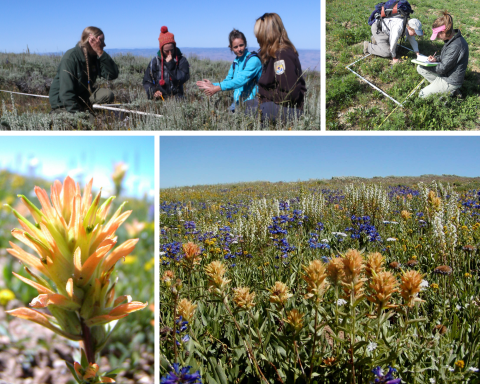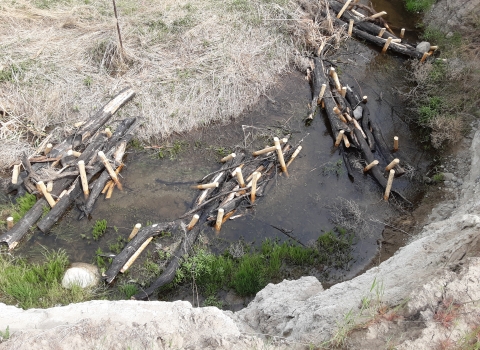The top of Mount Harrison in summer is one of the most colorful places in Idaho—a sea of blue, purple, pink, and red wildflowers carpet the mountaintop. But it is the bright yellow paintbrush that has drawn the most attention. This unique endemic plant, Christ's paintbrush (Castilleja christii), was once in danger, impacted by the highly aggressive, nonnative rhizomatous grass smooth brome, off-highway vehicle use, trespass livestock, and recreation activities. This was particularly concerning given Christ's paintbrush is only known from this single population on the summit of Mount Harrison in Cassia County, Idaho. By 1980, its habitat became so degraded that Christ’s paintbrush was designated as a candidate species for Federal listing under the Endangered Species Act. However, a Candidate Conservation Agreement and strong partnership, between the Sawtooth National Forest and the U.S. Fish and Wildlife Service, Idaho Fish and Wildlife Office (IFWO), as well as significant support and expertise from the Idaho Natural Heritage Program, Boise State University, Red Butte Garden, and many other partners and volunteers, turned that around. Numerous conservation actions were successfully implemented, and long-term monitoring programs were established to document their effectiveness. Some of these actions included establishing a Botanical Special Interest Area atop Mount Harrison, fencing to prevent livestock trampling, strategic placement of boulders to prevent off-road vehicle damage, creation of an interpretive area on Mount Harrison and, perhaps most significantly, an adaptive eradication program which greatly reduced smooth brome without harming the paintbrush population. This effort also included strategic plantings of Christ’s paintbrush and other native plants into bare spots that were once occupied by the invasive smooth brome. As a result of these diverse actions, Christ’s paintbrush was removed from candidate status in 2012. However, until techniques are developed to completely eradicate smooth brome, treatments to keep it from reinvading the habitat are ongoing. To demonstrate our continued collaborative commitment to the long-term viability of this endemic plant, a Memorandum of Understanding was recently signed between to the Sawtooth National Forest and IFWO. This strong conservation partnership will help ensure Christ’s paintbrush continues to keep Mount Harrison colorful.
By Karen Colson, Idaho Fish and Wildlife Office



